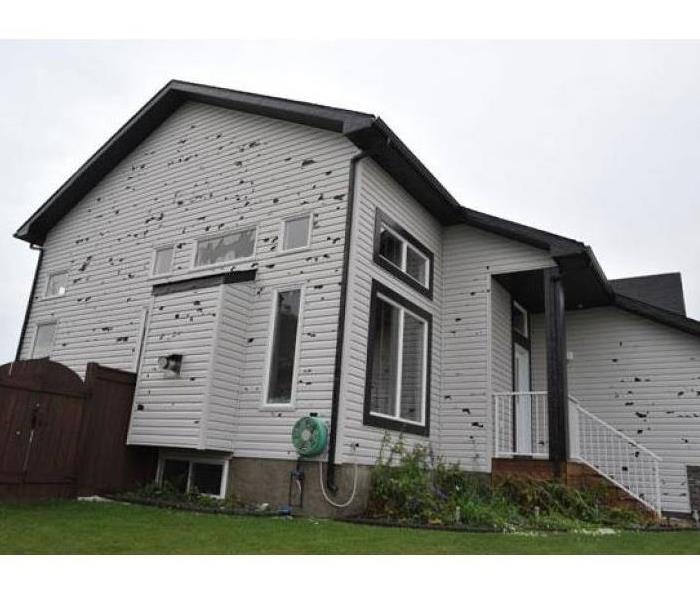Ways To Protect Your Home From Hail Damage
3/19/2021 (Permalink)
When rain and freezing temperatures mix we are at risk for hail damage. Hail is large, layered ice particles, often spherical, which are produced by thunderstorms having strong, tilted updrafts. Hailstorms form within an unusually unstable air mass, that is, an air mass in which the temperature falloff with height is much greater than normal.
Make sure your roof is in good condition:
Inspect your roof to repair any wear and tear as preventative maintenance.
Choose steep-sloped roofs:
If possible, select a home with a steep-sloped roof, as low-sloped and flat roofs suffer more severe hail damage.
Replace the roof when necessary:
If it’s time to replace the roof, make an informed decision and select a replacement shingle by reviewing the latest impact rating results by the Insurance Institute for Business & Home Safety.
Select fiber-cement siding:
Select fiber-cement siding where aluminum or vinyl siding would otherwise be used because it is more resilient to hail.
Select impact-rated skylights:
Select impact-rated skylights that meet FM Approval Standard.
Close drapes, window shades, and blinds:
Close drapes, blinds, or window shades during a severe hailstorm to keep the wind from blowing broken glass inside. Members of the National Roof Contractors Association (NRCA) are usually a good choice as they are normally up-to-date on the latest issues and product requirements. Some roofing manufacturers also have training and certification programs for contractors who install their products.






 24/7 Emergency Service
24/7 Emergency Service